|
||
Prismatic rhabdites |
| Listing of Structures |
| Back...Next |
| Meteorite: Bruno, IIAB, Iron Meteorite: Walker County, IIAB, Iron Meteorite: Coahuila, IIAB, Iron |
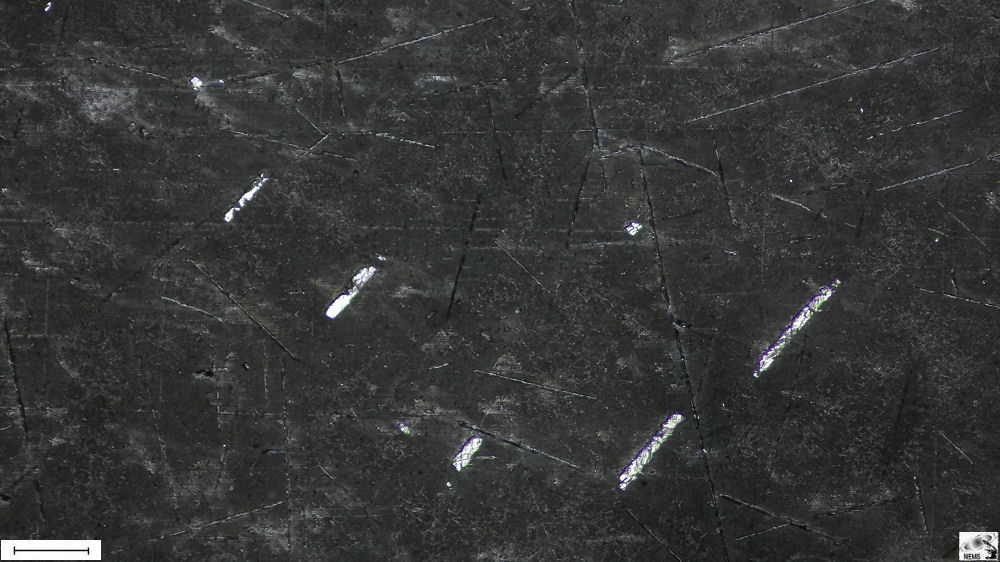
| Figure 1. Scale bar 200 µm. |
| Meteorite: Bruno, IIAB iron |
| Prismatic rhabdites. |
| Prismatic rhabdites are iron-nickel phosphide
crystals that form in hexahedrite meteorites through a combination of cooling
and shock processes. Hexahedrites are primarily composed of kamacite (low nickel content). During the slow cooling of the parent body (asteroid), phosphorus becomes concentrated in any remaining melt. As the cooling continues, the phosphorus-rich melt crystallizes, forming iron-nickel phosphide minerals such as schreibersite and rhabdites. These minerals precipitate out of the melt and grow within the kamacite matrix. Note, schreibersite and rhabdites have the same chemical formula, see page #5. The crystallographic properties of the iron-nickel phosphide influence the prismatic shape of rhabdites. The slow cooling allows these crystals to grow in a well-defined, elongated form of rod-like prismatic structures. Subsequent shock events, such as collisions with other bodies in space, can further influence the formation and distribution of rhabdites. These shocks can cause deformation and recrystallization, enhancing the prismatic nature of the rhabdites. When hexahedrite meteorites are treated with nitric acid, the prismatic rhabdites become more evident. The images of three hexahedrite iron meteorites, Bruno, IIAB, Coahuila, IIAB, and Walker County, IIAB were used below for the prismatic visualization. |
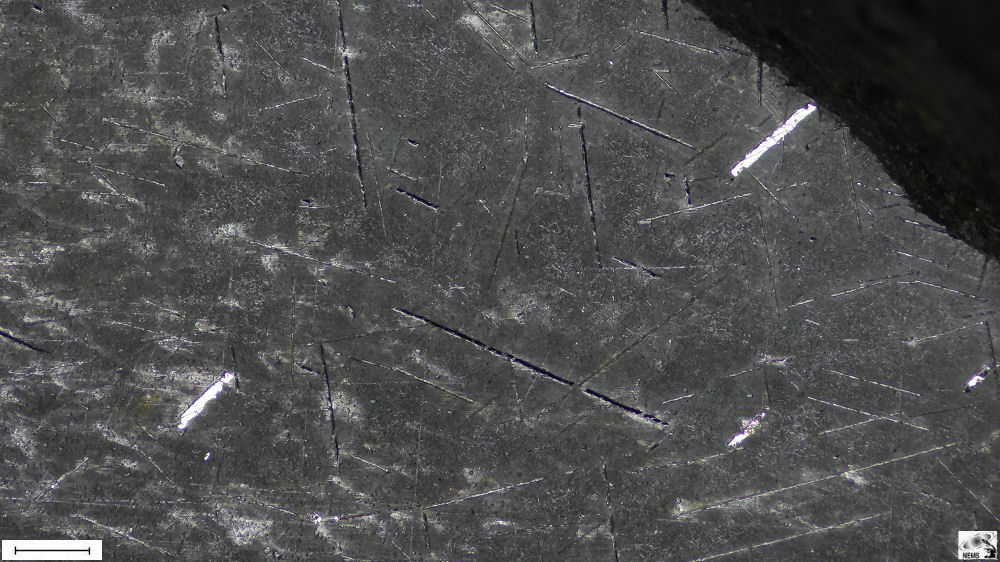
| Figure 2. Scale bar 200 µm. |
| Meteorite: Bruno, IIAB iron |
| Prismatic rhabdites. |
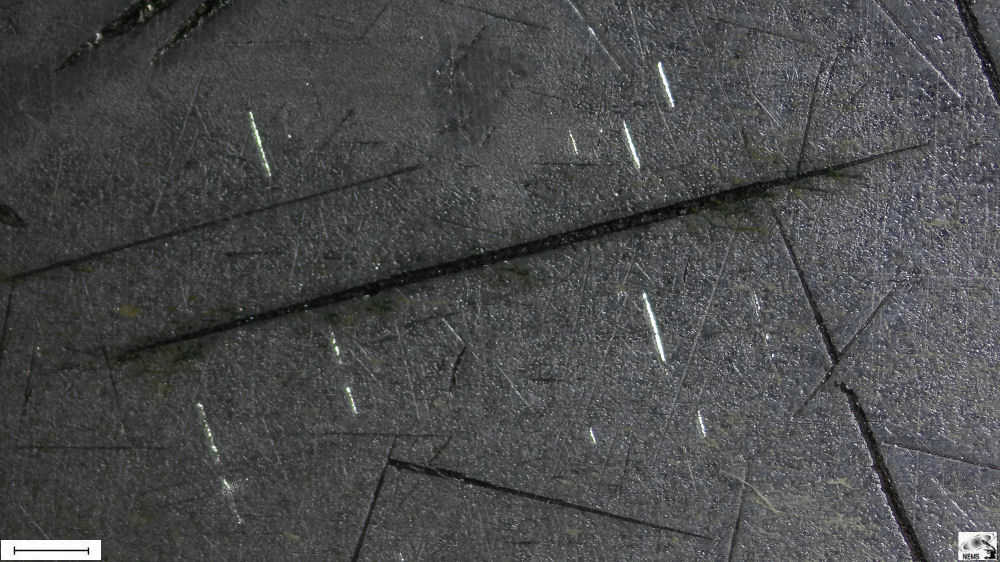
| Figure 3. Scale bar 350 µm. |
| Meteorite: Walker County, IIAB, iron |
| Prismatic rhabdites. |
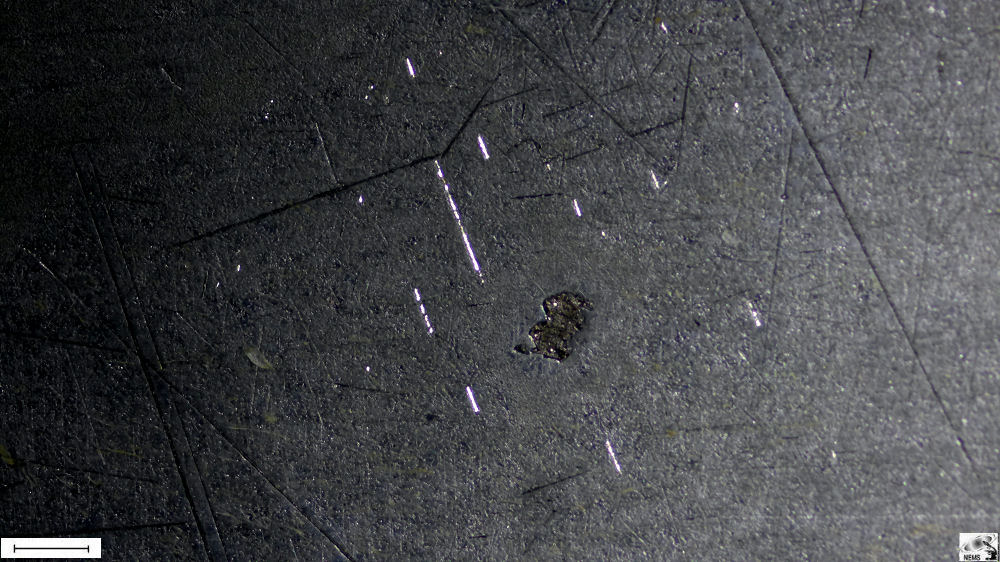
| Figure 4. Scale bar350 µm. |
| Meteorite: Walker County, IIAB iron |
| Prismatic rhabdites. |
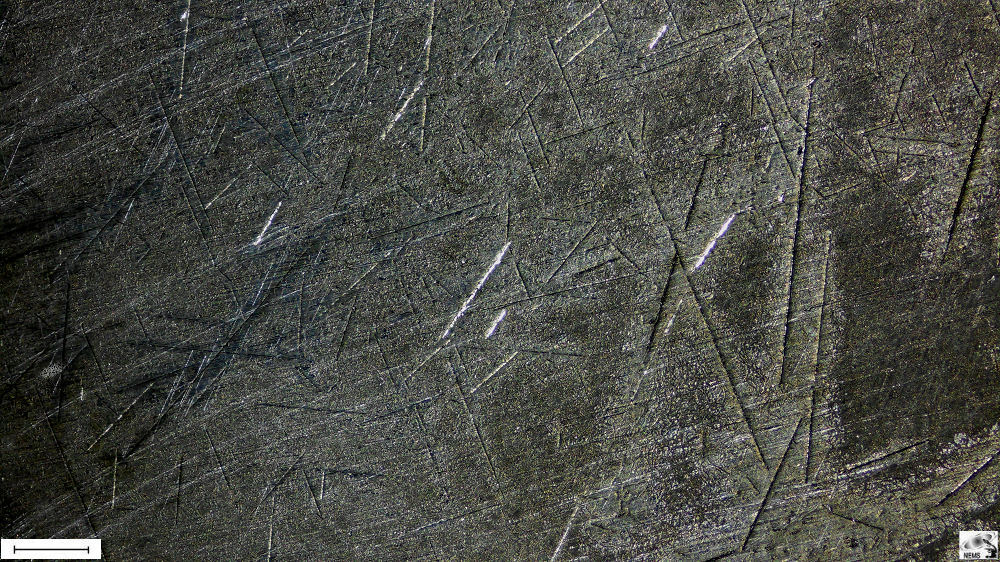
| Figure 5. Scale bar 300 µm. |
| Meteorite: Coahuila, IIAB iron |
| Prismatic rhabdites. |
| Listing of Structures |